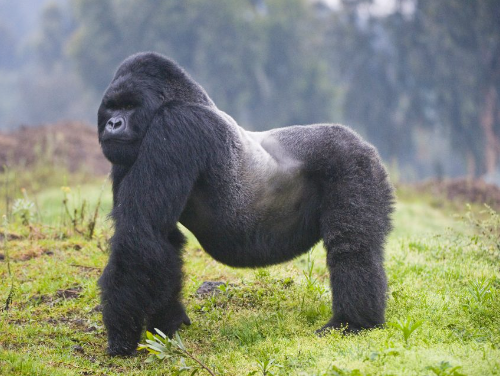Gorilla Life Expectancy in the Wild
Understanding the life expectancy of gorillas in the wild is important for conservation efforts and wildlife enthusiasts alike. These majestic creatures face numerous threats in their natural habitats, making their survival crucial for biodiversity. In this article, we explore the average lifespan of gorillas in the wild, the factors that influence their longevity, and the significance of these insights for conservation.
Average Lifespan of Wild Gorillas
Wild gorillas typically have a life expectancy of around 35 to 40 years. However, some individuals can live up to 50 years under ideal circumstances. The differences in lifespan can be attributed to a variety of factors, including species variation and environmental influences. For instance, the Western gorilla may have slightly different longevity metrics compared to the Eastern gorilla due to their habitats and threats they face. Understanding these differences can help researchers and conservationists tailor protective measures more effectively.
Factors Impacting Lifespan
Several factors can significantly influence the lifespan of gorillas in the wild. Predation, diseases, and habitat loss are among the primary threats that these animals encounter. For example, while adult gorillas face few natural predators, infants and juveniles are more vulnerable to attacks from leopards and other animals. Additionally, diseases like the Ebola virus are particularly harmful to gorilla populations, leading to reduced lifespan and higher mortality rates. Sustainable habitat management and strict conservation efforts play a crucial role in mitigating these threats, thereby enhancing the chances of longer lives for these incredible animals.
Conservation Efforts and Their Impact
Conservation efforts are vital for increasing the life expectancy of gorillas in the wild. Organizations focused on gorilla protection work not only to preserve habitats but also to combat poaching and the illegal wildlife trade. By creating protected areas and promoting ecotourism, these initiatives provide a safer environment for gorillas to thrive. In many regions, the result of such efforts is tangible: people are witnessing growing gorilla populations and healthier individuals. The success stories from conservation efforts serve as a reminder of the vital role humans can play in the protection of wildlife and the restoration of ecosystems.
In conclusion, the life expectancy of gorillas in the wild is influenced by a myriad of factors, from environmental challenges to human intervention. By understanding these elements, we can contribute to the efforts that ensure a brighter future for these magnificent creatures. Whether you’re a wildlife enthusiast or simply curious, learning more about conservation can help foster a greater appreciation for gorillas and the ecosystems they inhabit. Consider supporting local organizations or participating in conservation initiatives to make a difference!

